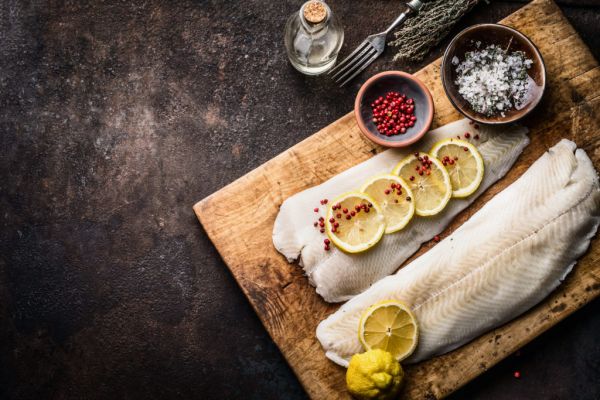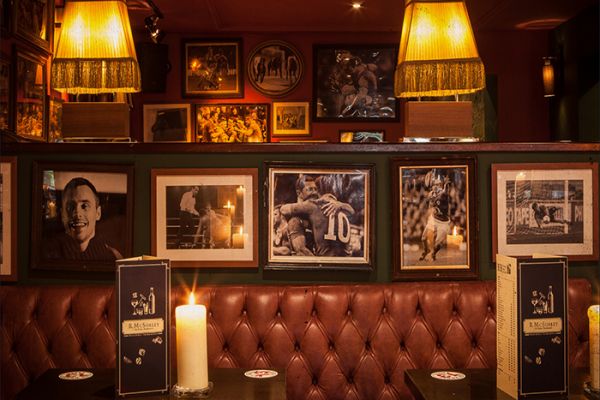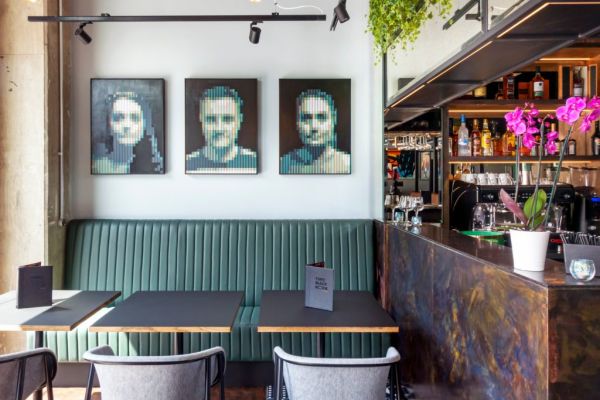It's lunchtime in London's financial district, and men in dark suits crowd the bar, sharing jokes as they drink beer from silver tankards.
A woman stands at a linen-clothed counter, awaiting orders for the oysters displayed on an antique marble slab in the window.
In the next room, with a high ceiling and nicotine-cream walls, more men at communal tables help themselves to the bread and butter as they examine the "Bill of Fare."
If time hasn't exactly stood still at Sweetings, which describes itself as probably the oldest fish and oyster restaurant in London, neither has it moved very quickly.
The restaurant only opens at lunchtime, five days a week, and there are no reservations. Just show up, order a black velvet – Champagne and Guinness, created in 1861 to mourn the death of Prince Albert – and wait your turn.
Starters range from a £7 lobster bisque ($10) to £20.75 dressed crab, as well as potted shrimps, prawn cocktail and smoked eel. The 14 mains, costing from £15 to £45, feature Dover sole, Cornish brill and other seafood specialties. The menu advises: "All Fish can be Fried, Grilled or Poached, please ask a member of staff for the best way to order."
And don't think about ordering tea or coffee after your meal – neither is served. There is, though, a fine selection of brandies and vintage port.
Sweetings opened on its present site in 1889, though the company's history dates to the 1830s, when it was called John S. Sweetings, Fish and Oyster Merchant. It supplied fish and ice to country houses.
Women started showing up in numbers to eat only 20 to 30 years ago, and credit cards were accepted for the first time some 15 years ago. Otherwise, little has changed since Sweetings was a favorite restaurant of the painter Henri de Toulouse-Lautrec. Even its Gothic-style building is historic: Constructed in 1869 and designed by Frederick J. Ward, the Albert Buildings' shape resembles New York's Flatiron Building.
Instagram: Joe Rose on InstagramBefore a computer system arrived in recent months, orders were written on paper and placed in the dumbwaiter down to the kitchen. Dishes would travel back up, only waiters didn't necessarily know in what order, which made the process a little confusing. There are still no plans to take reservations.
"People like it the way it is," says Richard Barfoot, who bought Sweetings in 2001 from the widow of his friend Graham Needham, a chef and host whose hospitality meant many lunches extended into the evenings.
"I had an interest in Sweetings when Graham bought it (around 1980) because he was an old friend," says Barfoot, who turns 80 this year. "His clientele in those days was fantastic. They came in from Fleet Street, they came in from the Stock Exchange. They had long lunches and he made them even longer."
Not all the guests would entirely qualify for the status of gentleman.
"We used to get some undesirables in here, crooks of the highest quality," Barfoot says, laughing. "There was one, George Francis, he was a South London boy, he used to come in with his henchmen for late-afternoon drinks. He was a very charming fellow, but a real tough guy.
"One time he said to Graham, 'How much do you want for this place? How about a million pounds?' Graham said he wasn't interested, and he wasn't even going to discuss it. Then he said to one of his henchmen, 'Go out and get the suitcase and show him what a million pounds look like.' And they brought in the case with all the notes in it. Graham said, 'I don’t want to know and if you are going to trouble me like that you can get out now.'"
If that's a fishy tale or not, what happened to Francis is well-known. "He was shot dead," says Barfoot.
He knows the City well. He began work in the financial district in 1950 as an invoice clerk for a fish company. He spent the next 66 years in the fish business, starting his own company, Barfoot Ltd., selling to hotels and restaurants. He still supplies the seafood to Sweetings, all of it from sustainable sources.
Softly spoken, smartly dressed and with the most beautiful of manners, Barfoot surveys the restaurant from his usual table, seated with his wife, Ann, and one of his daughters, Sue Knowler. While enjoying memories, he turns to the future.
“I suppose I won’t be living forever and my daughters will take over, and they seem to feel we should be looking to the future rather than living in the past. We’ll give it a shot. But I don’t think the reservation side will change. It’s like a club, and people like it that way.”
Knowler smiles as a uniformed waiter serves a simple plate of Dover sole. The waiter, Allan Gardner, later says that he joined Sweetings for a five-week temporary job in 1988 and never left.
What would Knowler change if she had her way?
"Nothing really," she says. "Why would you change anything?"
Article by Richard Vines, chief food critic for Bloomberg.









